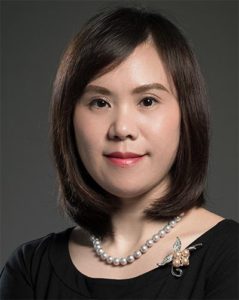In August 2019, it had been 13 months since Xihappy Finance found itself cash-strapped and the company’s actual controller went missing and escaped abroad. Xihappy Finance branded itself as “the world’s first platform for safe investment in artworks”. Although the economic crime investigation department of the Public Security Bureau has accepted the report on the case, the investigation was thwarted by the suspect’s escaping overseas. Regardless of Xihappy Finance’s violation of laws and regulations, from the perspective of art trading and art finance, this case has reflected the difficulty in art-secured lending in China.

Partner
Jingtian & Gongcheng
What is art-secured lending? Globally, art-secured lending usually consists of artwork-backed mortgage loans and artwork-backed pledge loans. However, as the General Rules for Loans stipulates, art-secured lending in China refers to any loan secured by the artwork of the borrower, or a third party, as mortgage or pledge in accordance with the mortgage method or pledge method as set out in the Security Law. Mortgage loans and pledge loans essentially differ in the types of securities provided to secure the loans. For a mortgage loan, the borrower does not transfer actual possession of the artwork. But for a pledge loan, the borrower must transfer actual possession of the artwork as the pledge to the lender.
Artworks are non-standard alternative assets, featuring low liquidity, low transparency and a high demand for professional knowledge. Therefore, art-secured lending is faced with unique difficulties and challenges.
Apart from difficulties caused by questions of authenticity, appraisal and low liquidity, challenges also come from the fact that a lender is usually incapable of handling artwork as an asset, there is insufficient registry for artwork as a security, and there are not many professional third-party experts.
Taking such difficult situations into consideration, the author suggests that to crack the difficulties in art-secured lending, the competent government authorities may consider making breakthroughs and innovations for art-secured lending from the following aspects.
(1) Pilot project
In view of the high demand for professional experience and the uniqueness of art-secured lending, extensively carrying out an art-secured lending business is not suggested. Instead, it is best to try this instrument in the form of a pilot project, within a certain scope, and to expand once the situation is better understood and risks are better controlled. The related scope can be determined by reference to the limits of jurisdiction, administrative territorial scope, or other scopes suitable for the pilot site.
(2) Lender with experience and capacity
It is recommended that lenders with experience and capacity in art-secured lending be encouraged to take the lead in carrying out this kind of financing business. The competent authorities may consider adopting an invitation system to invite commercial banks and non-banking financial institutions, or selectively invite artwork operation and management companies with potential to be eligible lenders (such as auction houses) to engage in this business.
It is worth noting that, as the General Rules for Loans stipulates, lenders (excluding private lenders) must be legally established within the territory of China, conduct the lending business with the approval of the People’s Bank of China or relevant financial regulatory departments, and be approved and registered by an administrative authority for industry and commerce.
(3) Professionalism and impartiality
It is recommended to select experts for art authentication and appraisals by following the principle of “focusing on the artworks and selecting experts based on professionalism and integrity”. Whether the expert is from the lender’s internal team, or is an external third-party professional, it is recommended to set up a mechanism of authentication and appraisals that requires the experts to demonstrate independence, impartiality and transparency with their professionalism and work ethics, so as to protect the operation of art-secured lending.
(4) Differentiation and uniqueness
Considering the diversity of artworks and the high demand for professional knowledge and experience, it is recommended to develop and cultivate art-secured lending institutions with differentiated expertise, with features based on careful planning, selection and procedures, and to encourage such institutions to co-operate in a mutually beneficial manner so as to increase efficiency and better serve clients.
(5) Risk management and control
It is recommended that all parties should comprehensively and objectively analyze, manage and control the risks related to art-secured lending. As it is complicated, diverse and subject to change, it is recommended to manage the following aspects:
(i) Due diligence on artworks. Lenders should establish a comprehensive procedure for due diligence, requiring the borrower to provide: documents to prove the ownership and provenance of the artwork (e.g., sales receipts, invoices and agreements), and an identity certificate of the borrower/guarantor and related information of the artwork (such as description, material and size introduction, and high-resolution photographs). After the initial investigations, the artwork appraiser should visit to examine and verify the artwork in person.
(ii) Registration of artwork securities. It is recommended that the competent government authorities should establish a registration system for art-secured lending, for example, by referring to the practice under the US Uniform Commercial Code (UCC), all the matters related to art-secured lending should be registered and entered into the system, which not only protects the rights of both borrower and lender, but controls risks related to art-secured lending.
(iii) Storage and safekeeping of artworks. The government should set up appropriate market access administration and regulatory compliance systems for third-party professional storage and safekeeping facilities of artworks, in order to safeguard the interests of all parties including the lender, the borrower and the guarantor (if it is a party different from the borrower), to ensure a transparent, comprehensive and traceable record of the status of the artwork – from when it is put in storage to the time in storage, to when it is discharged from storage – and ensure that this storage institution is independent from all related parties.
(iv) Art insurance. The two parties should determine in writing the type, coverage and amount of the insurance. Especially when the artwork is pledged, the lender should be listed as the additional insured and the beneficiary, so as to control related risks.
(v) Liquidity risks. Although it is difficult to manage liquidity risks, it is controllable through long-term planning.
(vi) Government compliance and regulatory risks. All parties should predict and understand the government compliance and regulatory risks related to artwork-secured loan financing, and actively manage these risks.
It is indeed not easy to crack difficulties in art-secured lending, and it requires tremendous efforts from various stakeholders, with their resources leveraged and synergies optimized, with support and guidance received from the competent government authorities, so as to make breakthrough and innovations in art-secured lending, in light of professionalism and integrity. With such, it is believed that the industry of culture and art can be empowered with finance, and be blessed with success.
Angell Xi is a partner at Jingtian & Gongcheng

Jingtian & Gongcheng Shanghai Office
45/F, K. Wah Centre, 1010 Huaihai Road (M), Xuhui District, Shanghai 200031, China
D +86 21 2613 6216
M +86 139 1845 6946
G +86 21 5404 9930-6216
F +86 21 5404 9931
E-mail:
xi.minjie@jingtian.com
www.jingtian.com





















